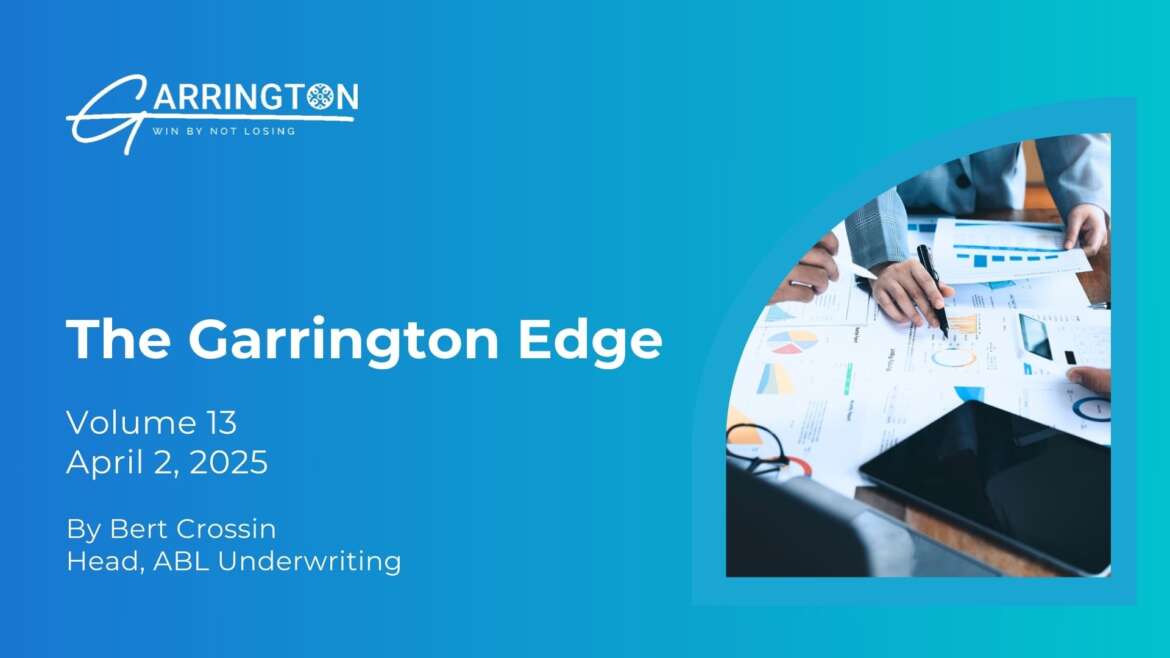ABL Series – Part Two: How We Do It Properly
Last week, we unveiled Asset-Based Lending (ABL)—what it is and why it matters. This week, we’re going a step further, exploring how we do it and why thoughtful diligence and disciplined underwriting are the foundation of our approach.
Because in ABL, details matter. And done right, ABL can be a powerful catalyst—not just a lifeline.

It Starts with the Whole Picture
Yes, assets are fundamental. But no ABL deal is just about collateral. When evaluating a new opportunity, we want to understand the whole business—its model, management, and momentum.

We ask the right questions:
- How does this company operate within its industry?
- Are its assets capable of supporting the capital needed to move forward?
- Can the company comfortably service the debt?
- Is the management team credible, experienced, and invested?
- Is the plan for growth or turnaround realistic?
- What external risks—cyclical industries, regulation—might impact stability?
We’re not in the business of fast capital. We’re in the business of strategic, secure lending—where the goal is to help companies move forward, not stall out.
We lend as partners, not opportunists. Liquidation is not the plan—it’s the absolute last resort. Our job is to structure deals that support durability and growth. When our borrowers thrive, so do we.
The Collateral Conversation
Still, we’re realists. The value and quality of collateral are critical, and we evaluate assets with discipline and a clear eye.
Here’s what we always keep in mind:
- How easily—and quickly—can the assets be converted to cash?
- Are the assets specialized or generic? Niche equipment may have limited resale value.
- In a worst-case scenario, what’s the liquidation value—and is it enough?
We stress-test these assumptions early so we’re not caught off guard later. Deep ABL experience matters here: We’ve seen how asset values hold—or don’t—across different cycles and industries.
Underwriting, the Right Way
Our underwriting process is thorough by design and flexible by necessity. It evolves as we learn more, and each piece of diligence informs the next.
The Field Exam
This hands-on process involves a third-party professional reviewing the borrower’s books, records, and internal systems. It’s not a financial audit—but it helps us assess the working capital cycle and gain confidence in the integrity of their reporting.
Asset Appraisals
We use reputable, independent appraisers to determine the collateral’s fair and realizable value. Our standard is reality, not aspiration.
Background Checks
We verify that leadership is who they say they are, with the track record and integrity to lead. This is private credit—we’re betting on people just as much as businesses.
Financial Review
Beyond the historicals, we look at forward-looking assumptions, pressure-test the forecast, and evaluate margin of error. Are projections realistic? Where’s the risk?
We don’t look for perfection. We look for preparedness.
Legal Diligence:
Securing the Foundation
Every ABL transaction is supported by legal diligence to ensure we have a properly perfected interest in the collateral—typically a first lien. Our legal team reviews company structure, governance documents, and operating agreements to ensure our position is enforceable, clear, and protected.
Our approach is proactive, not reactive. We want to make sure everything is buttoned up before the ink dries.
One Final Thought:
Liquidity is the Lifeline
Even the most asset-rich companies can run into trouble if they lack access to liquidity. That’s why we always assess a business’s breathing room—both at closing and in the future.
Forecasts may miss the mark, but a well-structured ABL facility provides flexibility. And we don’t disappear after the deal closes. We stay close, collaborate with management, and help navigate through change.
We call it partnership lending for a reason.
Coming Up Next:
In the next chapter of our ABL series, we’ll bring these principles to life through real-world case studies. You’ll see how our approach plays out across two different examples, because when it comes to ABL, the story behind the numbers makes all the difference.
Stay tuned.




